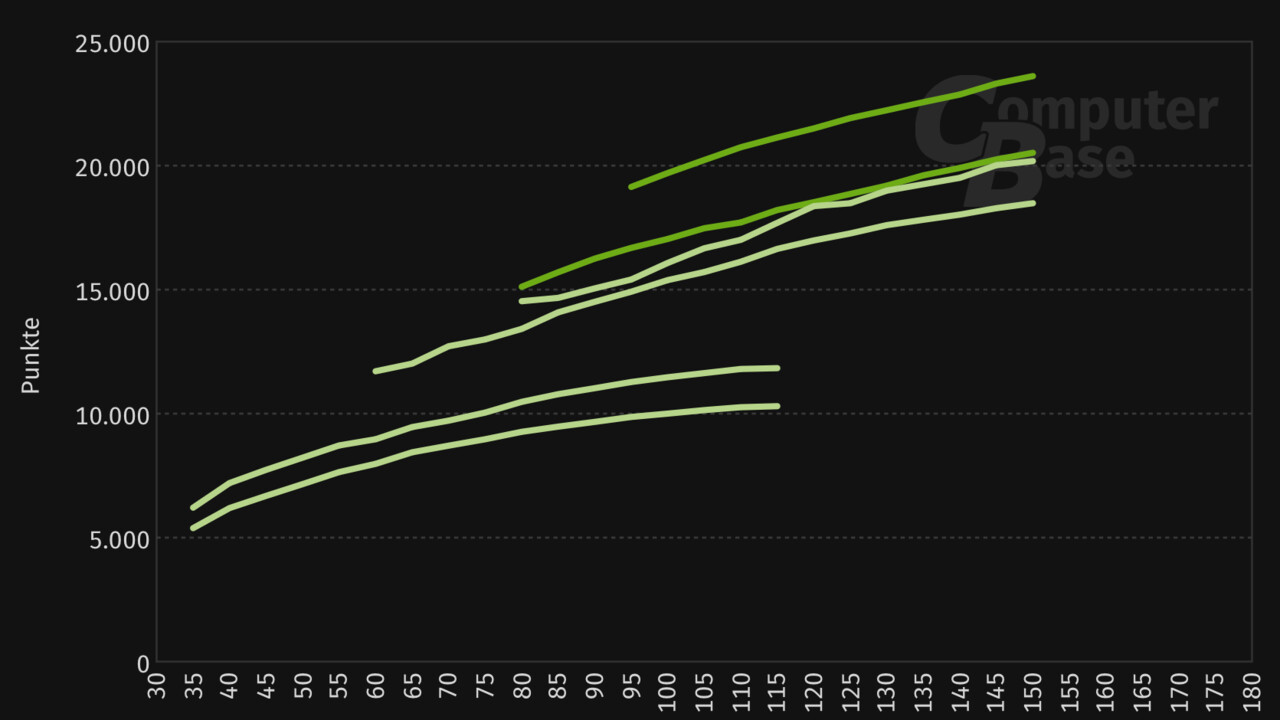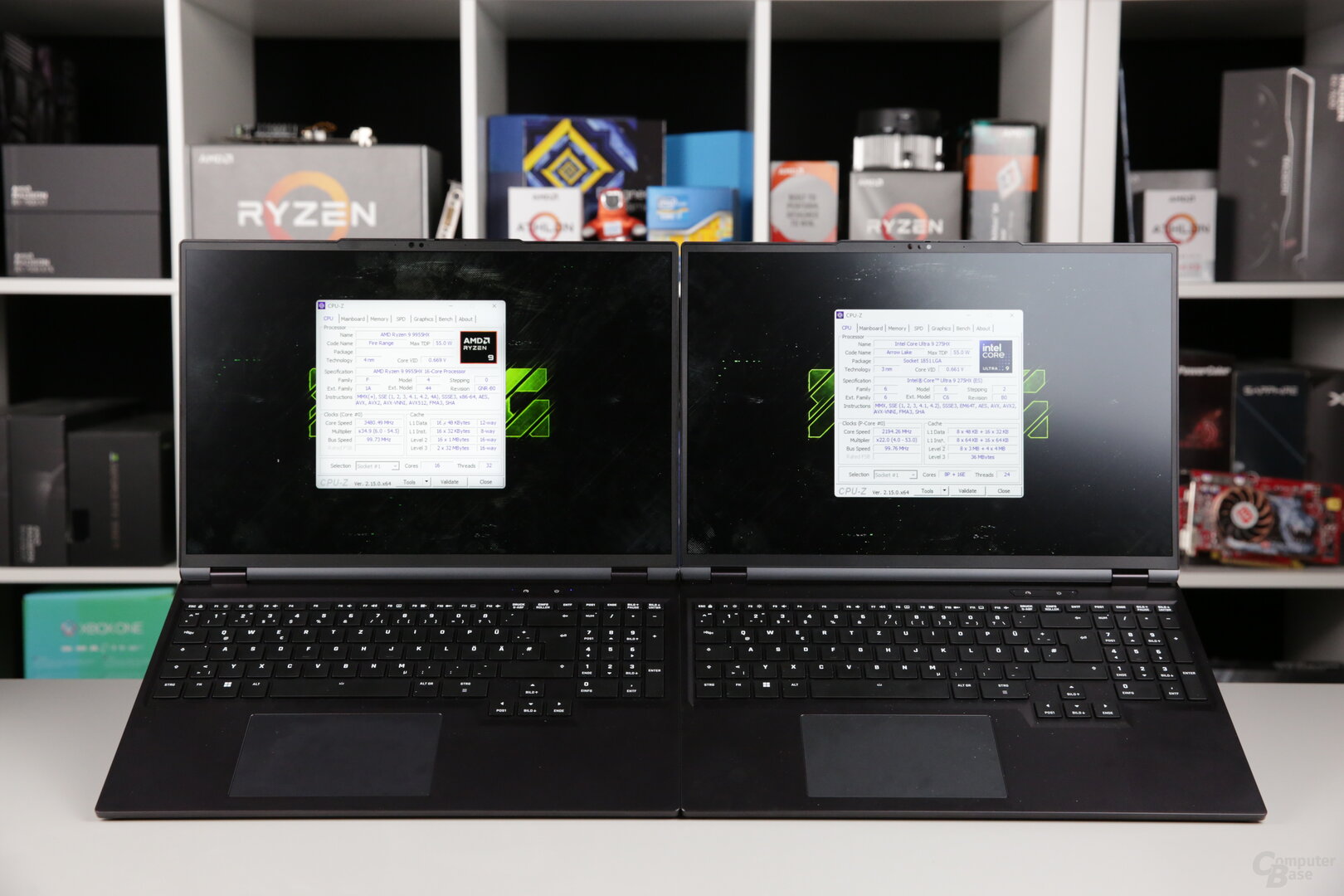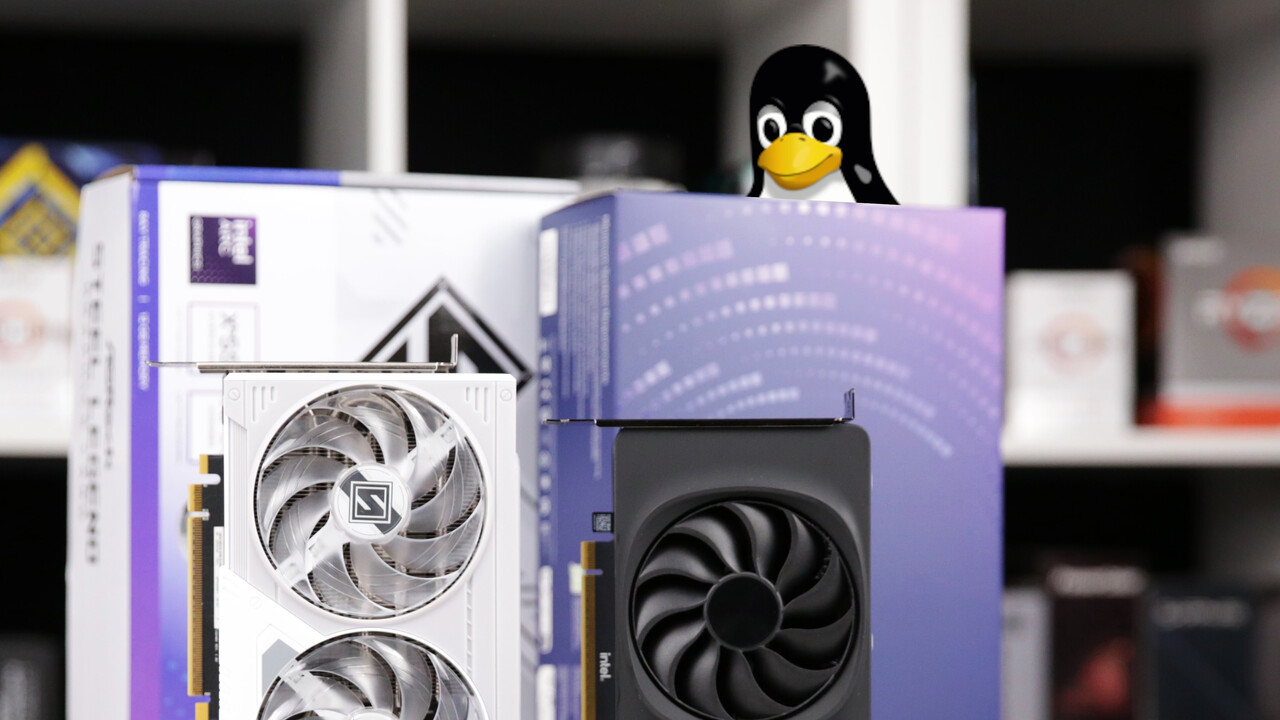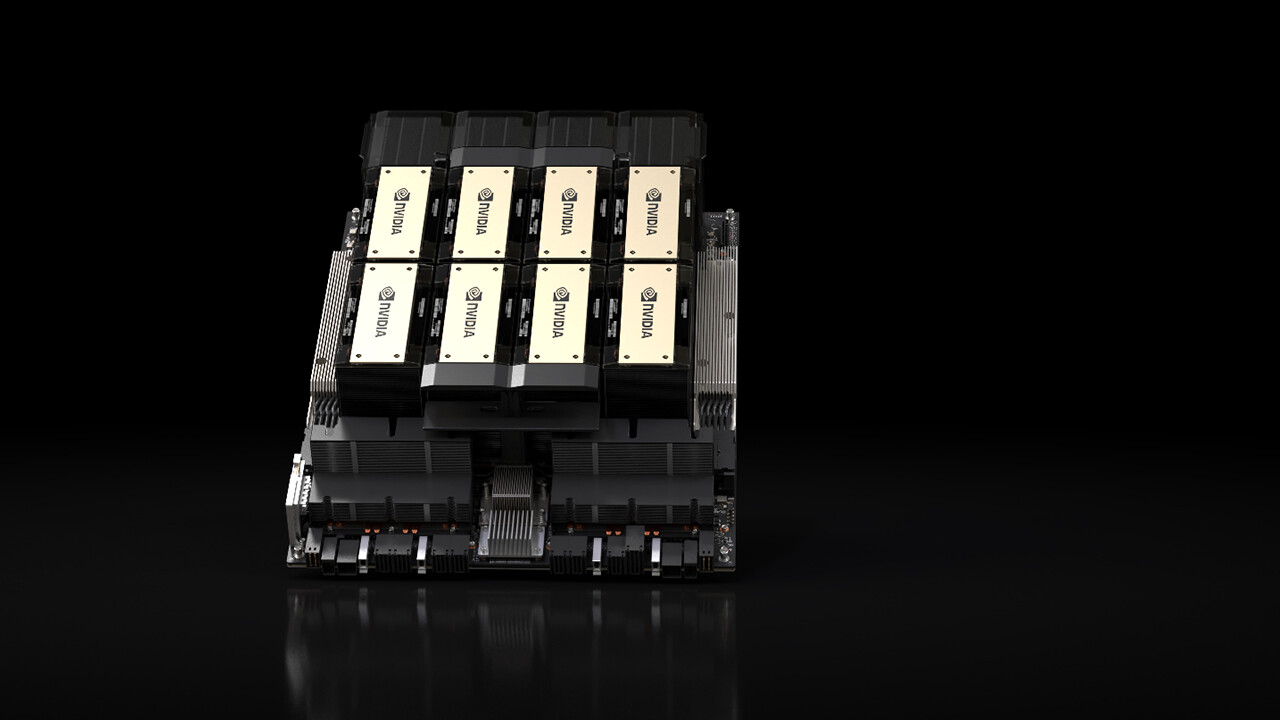GeForce RTX 5090 and 5080 Laptops in Test: Benchmarks with “Max-P” and 80-150W TDP Scale 9 comments

After the embargo tests of the GeForce RTX 5090 GPU (160 watts) in the Razer Blade 16, the blocking period has died on all other systems and the GeForce RTX 5080/5070 TI GPUs. The RTX 5080 and RTX 5090 “MAX-P” with 175 watts are so fast, and therefore they scale with the TDP. All the details of the benchmark test. Table of Contents Benchmarks with “max-p” and 80-150W TDP scaling Other benchmarks with the XMG NEO 16 E25 and A25DAS TDP control center TDP scaling TDP in game time ON SPY ON APPENDANT TESTS
More benchmarks with the XMG NEO 16 E25 and A25
As in the test of the new AMD Ryzen 9 9955HX and Intel Core Ultra 9 275HX HX CPUs, the XMG NEO 16 (E25) and XMG NEO 16 (A25) were used for additional benchmarks. XMG NEO 16 (E25) with Intel Core Ultra 9 275H and GeForce RTX 5080 175W Laptop GPU XMG NEO 16 (A25) with AMD Ryzen 9 9955HX and GeForce RTX 5090 175W Laptop GPU
Apart from the CPU platform and the associated I/O hardware (Thunderbolt 4 only with the XMG NEO 16 (E25) with Intel CPU), the two laptops are completely identical.
Both notebooks can use the new Blackwell mobile GPUs with a maximum permissible TDP of 150 + 25 watts (175 watts), and the cooling is powerful enough to maintain this level at all times. XMG NEO 16: AS A25 with Ryzen 9 9955HX and RTX 5090 GPU
XMG NEO 16: AS A25 with Ryzen 9 9955HX and RTX 5090 GPU
The XMG Control Center as a large playground
 The XMG Control Center allows for comprehensive adjustments to the CPU and GPU TDP.
The XMG Control Center allows for comprehensive adjustments to the CPU and GPU TDP.
The XMG Control Center allows for comprehensive adjustments to the CPU and GPU TDP.
With the GPUs, 80 to 175 watts (5080) or 95 to 175 watts (5090) are possible. Whether Dynamic Boost 2.0 is used at all can also be determined: in 5-watt steps from 0 to 25 watts. The announcement news provides more details on the new XMG NEO 16 E25 and A25:
The following benchmarks should be understood as a complement to the GeForce RTX 5090 GPU benchmarks with a maximum of 135 + 25 watts in the Razer Blade 16 (2025).
Since the XMG NEO 16 A25 with Ryzen 9 9955hx and GeForce RTX 5090 laptop GPU left the editorial team again earlier this week to assist other editors following a hardware failure, gaming benchmarks are still missing for this model. Nevertheless, the 3DMark results provide an insight into what’s possible with a 175-watt RTX 5090 versus a 160-watt variant. TDP results have also been generated.
3DMark Results
In the 3DMark suite, the XMG NEO 16 (A25) with an RTX 5090 laptop GPU can outperform the 175-watt Razer Blade 16 by 6, 4, and 1 percent. The GeForce RTX 5080 laptop GPU in the XMG NEO 16 (E25) doesn’t quite reach the level of the 175-watt GeForce RTX 4090; the 5090’s 175-watt performance fluctuates between 10 and 17 percent.
When comparing the RTX 5000 to the RTX 4000, it’s important to consider in 3DMark that the new generation Blackwell tends to show stronger performance in these synthetic benchmarks than in gaming benchmarks.
Gaming Benchmarks
The WQHD gaming benchmarks also paint a different picture as a target resolution. As already mentioned, the GeForce RTX 5090 laptop GPU with 175 watts is missing at this point because the model shipped early. However, the GeForce RTX 5080 laptop GPU with 175 watts is included.
In terms of FPS, it can approach the RTX 5090 with 160 watts in the Razer Blade, while the XMG NEO 16 with Core Ultra 9 275HX even surpasses the frametime – the CPU is significantly stronger in games than the Ryzen AI 9 HX 370 in the Razer notebook. The new Intel Core Ultra HX CPU (test) performs the same way with the 2023 Ryzen 9 7945HX3D.
TDP Scale in 3DMark Time Spy
Finally, Techastuce also used the capabilities of the XMG Neo 16 series in this generation to demonstrate how the performance of the GeForce RTX 5090 and RTX 5080 GPUs has evolved with increasing TDP. The available bandwidth, which ranges from 95 to 150 watts and the 5080 from 80 to 150 watts, was used. Dynamic Boost was implemented externally, as in this case, the CPU can also compensate for the difference in whether or not it frees up the GPU from its power budget.
Again, it’s important to consider that the new generation of Blackwell GPUs tends to show stronger growth in these synthetic benchmarks than in gaming. The diagram should therefore not be used for absolute performance between RTX 5000 and RTX 4000, but to evaluate the scaling of the allowed TDP band.
At first glance, it’s striking that Nvidia has seized the bandwidth of the TDP classes allowed for the RTX 5090 and 5080. While 80 (4090) or 60 (5080) watts were possible for the RTX 4000, there are now 95 or 80 watts. TDP Model: Performance Freedom in Performance Increases
PERMITTED TDP RTX 5090 Laptop GPU 95-150 WATT +23% RTX 5080 Laptop GPU 80-150 WATT +36% RTX 4090 Laptop GPU 80-150 WATT
Due to the narrower version of TDP limits, the performance of new graphics cards no longer fluctuates as dramatically as a generation ago. However, a performance difference of 23 or 36% can still exist between the 5090 and 5080, depending on the notebook (measured in the 3DMark time-spy). That’s why it’s so important for manufacturers to specify which TDP the graphics card in your laptop uses. Officially, they should continue to do so. Further tests will follow.
Further benchmarks of the GeForce RTX 5080 laptop GPU in AI and creative applications will be submitted in the near future.
Techastuce received the XMG NEO 16 (E25) with Intel Core Ultra 9 275Hx and the XMG NEO 16 (A25) with AMD Ryzen 9 9955HX from Schenker Technologies under NDA. The only requirement was the earliest possible release date. The manufacturer also had no influence on the report; there was no obligation to publish.
Was this article interesting, useful, or both? The editorial team welcomes any support from Techastuce Pro and disables ad blockers. Learn more about monitors based on the computer. Problems: dangerzing danger rtx 50 debize rtx 5080 Debify rtx 5090 graphics nvidia nvidia nvidia Blacks xmg

An engineer by training, Alexandre shares his knowledge on GPU performance for gaming and creation.



